The DS2409 is designed for use in access-control probe points (i.e., readers) and to lower the bus load in large
?
Introduction
With its unique feature set, the DS2409 MicroLAN coupler can be used in a several specialized applications. This application note first lists the features and applications of the DS2409 and then identifies alternative circuits that can be used to achieve comparable functionality. Subsequently, the alternative circuits are discussed in more detail.
?
DS2409 Description
The DS2409 is a special type of a 2-port addressable switch. Instead of switching a programmable input/output (PIO) to high or low, the part connects its output ports to the incoming 1-Wire line using transmission gates. No more than a single 1-Wire output can be active at any given time. Besides the 1-Wire outputs, the DS2409 has a control output which can be associated with the main output (default), the auxiliary output, or be operated independently. This configuration is controlled through the Status Control Byte (see data sheet). The Status Info Byte (see data sheet) allows the master to verify the device configuration, and to check the status (active or inactive), the logic state (high or low), and the event flag (set/cleared) of each 1-Wire output. Table 1 summarizes these and additional features and explains their benefits.
Table 1. DS2409 Features and Benefits
| Feature Name | Description | Benefits |
| No more than one output active at any time | Only one output can be connected to the incoming |
Keeps the bus load low. |
| Control output | The DS2409 has an open-drain control output. On power-up, the control output is configured to light an LED when the main output is active. Under software control, the control output can be associated to the auxiliary output or be turned on/off directly. | Automatically indicates the active channel. Can also be used to implement a handshaking function, as shown in the Dual-master network example below. |
| Event detection | Both outputs have an event-detection feature. If the output is inactive, a falling edge on the output, e.g., caused by a presence pulse of an arriving 1-Wire slave, sets the event flag. | Latching an event lowers bus traffic. |
| Conditional search | If the event flag of the main output is set, the part participates in the conditional search. | Reduces bus traffic in an access-control application. |
| Reset pulse before output activation | Both outputs assert a reset pulse before activation (see Smart-On commands, Table 4). | Reduces communication overhead when opening a path through a multilayer network. |
| Short detection | Both outputs have a short detection feature (see Smart-On commands). | Prevents bus collapse due to short or sabotage. |
The DS2409 requires a 5V VDD supply for operation. On power-up, both the 1-Wire outputs are inactive and pulled to VDD through internal resistors. A short power-supply disconnect causes the part to perform a power-on reset. With VDD power available, a short disruption of the incoming 1-Wire line causes the DS2409 to perform a soft power-on reset. When the master is reconnected, the configuration is reset to its power-on default state and the 1-Wire outputs are inactive; the state of the event flags is undefined.
The features in Table 1 are targeted towards the three main applications: a smart probe point, multilayer network, and dual-master network (see Table 2).
Table 2. Features vs. Application Matrix
?
Smart Probe Point
Figure 1 shows the topology of an access-control system that uses iButton? devices as electronic keys. The combination R1/C1 should be included near the 1-Wire adapter. R1 is needed to ensure that the DS2409s perform a soft power-on reset if the 1-Wire bus is interrupted. C1 prevents the DS2409s from obstructing the 1-Wire bus in case of a VDD outage.

Figure 1. Access-control topology with smart probe points.
Instead of the main 1-Wire bus, the probe points (e.g., DS9092 iButton probe) are located on secondary network that branches off the main output of a DS2409. Connected to the auxiliary output is an ID chip, e.g., a 1-Wire EEPROM programmed with the branch name. During normal operation, all the branches are inactive (disconnected from the main bus) while the host computer performs a conditional search to detect events. An iButton that arrives at one of the probe points sets the event flag of the DS2409 that controls the branch. With the next scan cycle, the host locates the DS2409 and activates the auxiliary output to read the branch name. Next, the host accesses the same DS2409 and activates the main output to communicate with the iButton that has just arrived. While the main output is active, the LED is on, confirming to the user that the arrival is detected. Instead of lighting an LED, the control output could be wired to unlock the door under software control. Due to the short detection of the Smart-On command, the DS2409 prevents the network from failure if the probe is shorted.
Multilayer Network
For any network it is important to find the best balance between the load that the master must drive and the number of nodes (or braches, or slaves) serviced. One method to achieve this is a multilayer topology (Figure 2). The illustration shows four layers, beginning with the trunk (Layer 0), which is always active. Every subsequent layer consists of switched branches (Layers 1 to 3). The combination R1/C1 should be included near the 1-Wire master. If a path through one or more DS2409 devices is established and the connection between the 1-Wire trunk and master breaks, R1 ensures that the path is automatically switched off when the master is reconnected. C1 prevents the DS2409s from obstructing the 1-Wire bus in case of a VDD outage.
To efficiently control such a network, the master should know the network's topology in the form of the ROM ID numbers of all DS2409 slaves on each branch on each layer. To open the path to slaves on Layer 3, as indicated by the turquoise arrow, the master would have to issue the following command sequence:
- Match ROM for U1 on the trunk.
- Activate the main output (this opens the path to two slaves on Layer 1).
- Match ROM for U3 on Layer 1.
- Activate the main output (this opens the path to two slaves on Layer 2).
- Match ROM for U4 on Layer 2.
- Activate the auxiliary output (this opens the path to the slaves on Layer 3 that are connected to this output).

Figure 2. Multilayer network topology.
As a VCC-powered device, the DS2409 loads the 1-Wire bus with 100pF, maximum (50pF from the 1-Wire input and 50pF from the activated output). For comparison, a typical parasitically powered 1-Wire slave adds a load of 800pF to 1000pF. In this example topology, the total load that the master must drive is: one DS2409 on the trunk (50pF), two DS2409s on Layer 1 (150pF, two inputs, one output), two DS2409s on Layer 2 (150pF), all slaves connected to the auxiliary port of U4 (50pF + slaves). This is a total 400pF plus slaves.
Depending on the requirements of the application, there could be more than two DS2409s on each branch. Table 3 shows the maximum number of branches created and the corresponding load from the couplers. From layer to layer, the number of branches grows exponentially, while the load from the DS2409 increases only linearly.
Table 3. Multilayer Branches Created vs. DS2409 Load
| Network Depth | Configuration | |||
| Two DS2409s per Branch | Three DS2409s per Branch | Four DS2409s per Branch | ||
| Layer 0 | Branches created | 4 | 6 | 8 |
| Total DS2409 load | Two parts | Three parts | Four parts | |
| Layer 1 | Branches created | 16 | 36 | 64 |
| Total DS2409 load | Four parts | Six parts | Eight parts | |
| Layer 2 | Branches created | 64 | 216 | 512 |
| Total DS2409 load | Six parts | Nine parts | 12 parts | |
| Layer 3 | Branches created | 256 | 1296 | 4096 |
| Total DS2409 load | Eight parts | 12 parts | 16 parts | |
| Layer n | Branches created | 4 × 4n | 6 × 6n | 8 × 8n |
| Total DS2409 load | 2 × n + 2 | 3 × n + 3 | 4 × n + 4 | |
Besides the communication overhead to open the path to the destination layer, which increases linearly with the number of layers, one also needs to consider the impedance that the DS2409 adds to the path. For the main output, this is typically 10Ω (20Ω, max), and typically 15Ω (30Ω, max) for the auxiliary output. The overall effect of the nonzero impedance reduces the high-level voltage on the destination layer (master-to-slave) and raises the low-level voltage at the trunk (slave-to-master). The reduced high level is generally not an issue. However, due to the raised low level one should not go beyond Layer 4.
 電子發(fā)燒友App
電子發(fā)燒友App









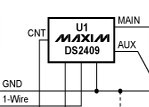
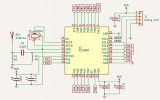

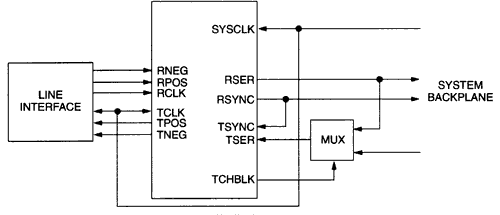
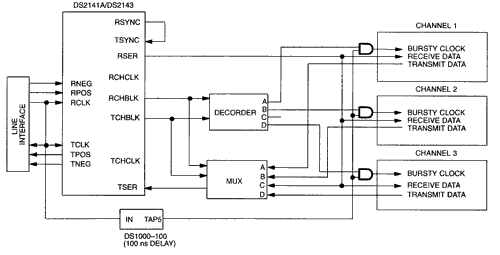
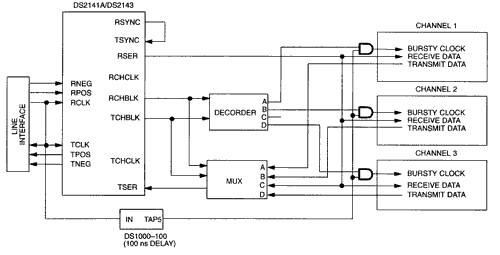
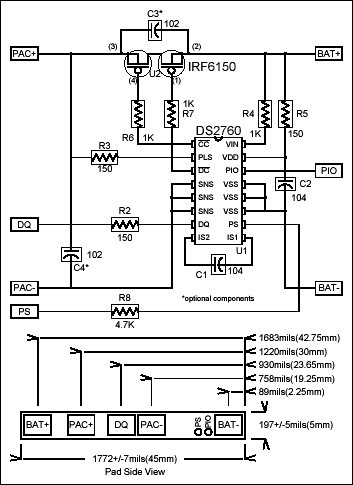

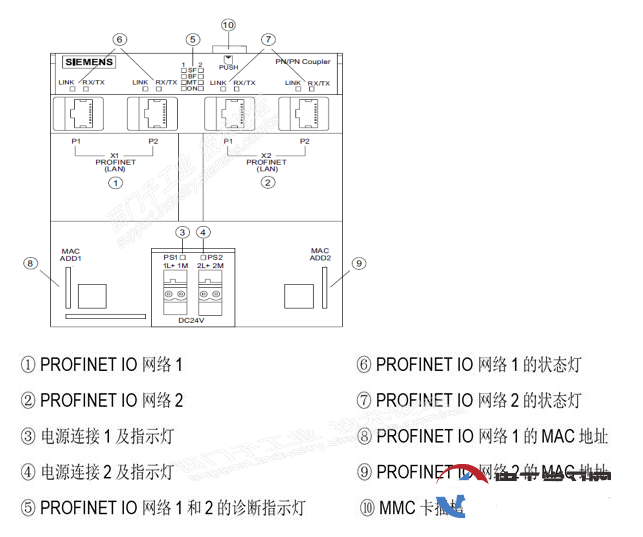

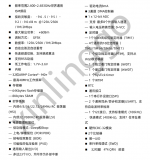

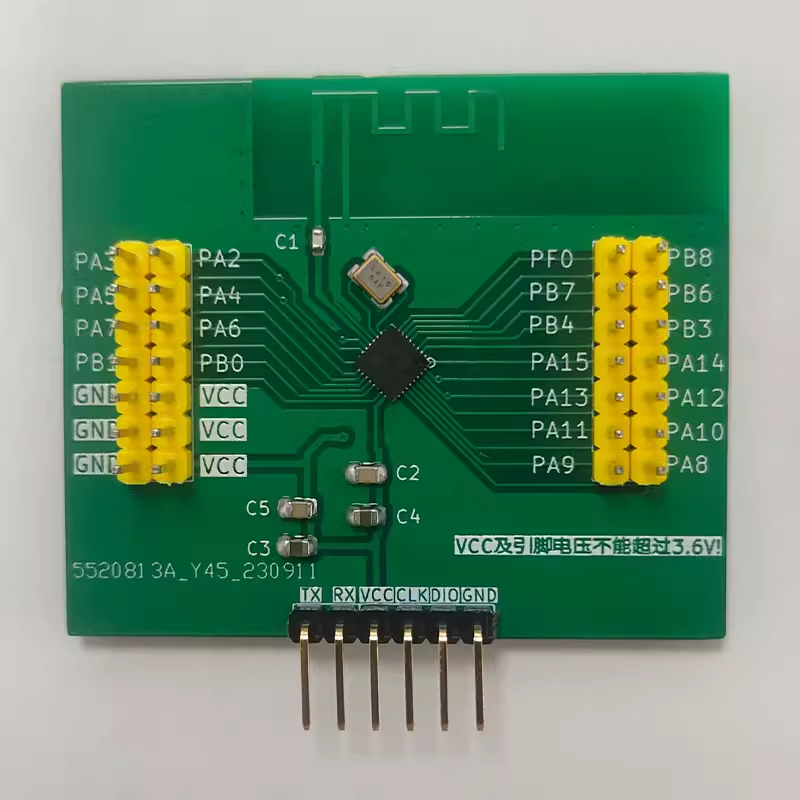
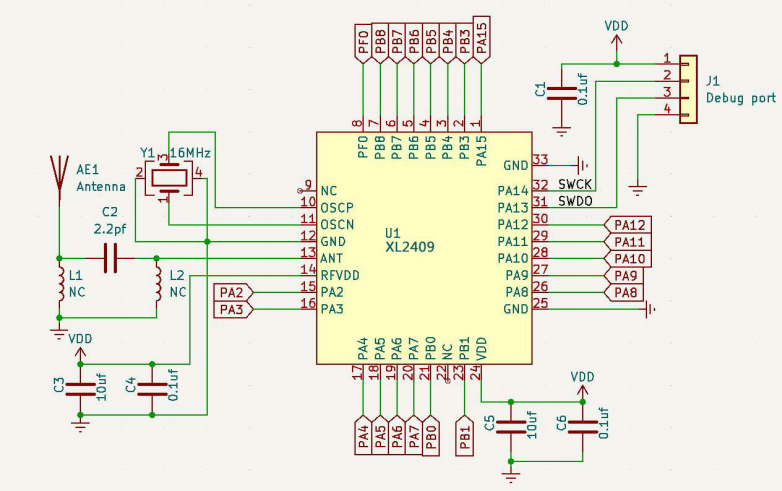










評論